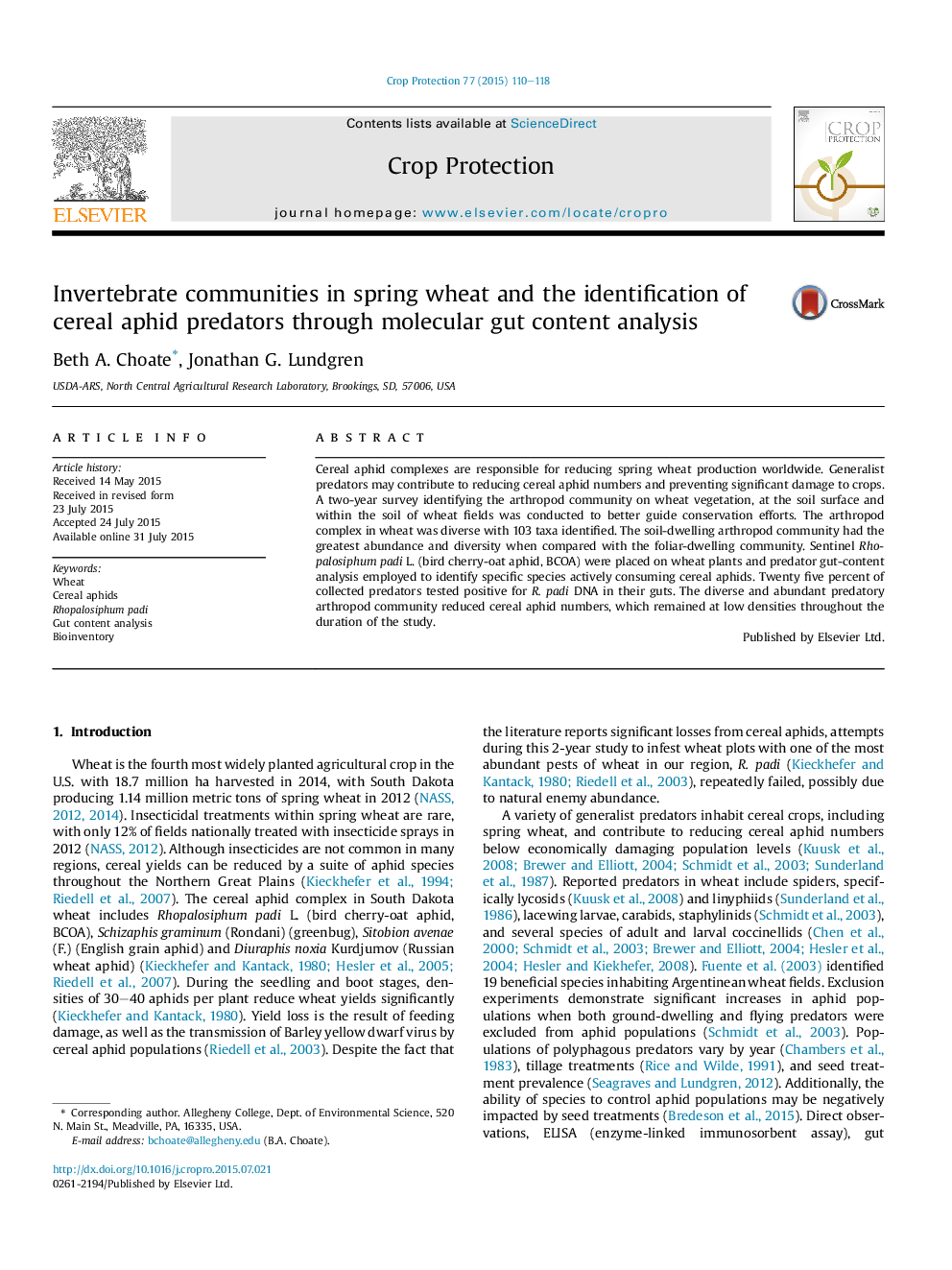| Article ID | Journal | Published Year | Pages | File Type |
|---|---|---|---|---|
| 4505647 | Crop Protection | 2015 | 9 Pages |
•A two-year survey of the arthropod community throughout wheat fields was conducted.•One hundred and three taxa were identified on wheat vegetation, on the soil surface and in the soil.•Soil-dwelling arthropods were more abundant and diverse than foliar-dwelling arthropods.•Predator gut-content analysis was employed to identify predators of Rhopalosiphum padi.•Twenty five percent of collected predators tested positive for R. padi DNA in their guts.
Cereal aphid complexes are responsible for reducing spring wheat production worldwide. Generalist predators may contribute to reducing cereal aphid numbers and preventing significant damage to crops. A two-year survey identifying the arthropod community on wheat vegetation, at the soil surface and within the soil of wheat fields was conducted to better guide conservation efforts. The arthropod complex in wheat was diverse with 103 taxa identified. The soil-dwelling arthropod community had the greatest abundance and diversity when compared with the foliar-dwelling community. Sentinel Rhopalosiphum padi L. (bird cherry-oat aphid, BCOA) were placed on wheat plants and predator gut-content analysis employed to identify specific species actively consuming cereal aphids. Twenty five percent of collected predators tested positive for R. padi DNA in their guts. The diverse and abundant predatory arthropod community reduced cereal aphid numbers, which remained at low densities throughout the duration of the study.
